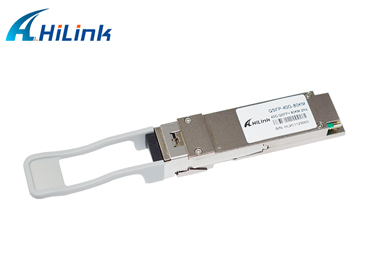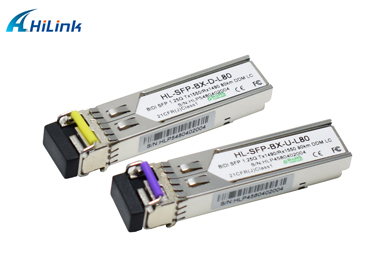Troubleshoot and Maintain SFP Transceiver Modules
Jun. 07, 2023
SFP (Small Form-factor Pluggable) transceiver modules are commonly used in networking equipment to provide connectivity over fiber optic or copper cables. Like any electronic component, SFP transceivers may encounter issues or require maintenance over time. Here are some troubleshooting and maintenance tips for SFP transceiver modules:
Cleaning:
Ensure that the SFP transceiver module is clean and free from dust, dirt, or debris. Use a lint-free cloth or specialized cleaning tools designed for fiber optic connectors to gently clean the transceiver's optical interface.
Avoid touching the optical connectors with bare hands, as oils and contaminants from the skin can adversely affect the performance of the transceiver.
Visual Inspection:
Inspect the SFP transceiver for any physical damage, such as bent pins or connectors, loose or damaged cables, or broken latches. Any visible damage should be addressed or replaced to maintain proper functionality.
Hilink 40G QSFP+ ZR4 Optical Transceiver
Cable Connections:
Check the cable connections at both ends to ensure they are securely plugged into the SFP transceiver and the corresponding equipment. Loose or improperly connected cables can lead to intermittent or no connectivity.
Link and Error Indicators:
Observe the link and error indicators on the networking equipment connected to the SFP transceiver. If the link indicator is not lit or the error indicator is flashing, it may indicate a problem with the transceiver or the connection.
Refer to the equipment's documentation to understand the specific meaning of the indicator lights and troubleshoot accordingly.
Compatibility:
Verify the compatibility of the SFP transceiver module with the networking equipment it is installed in. Ensure that the transceiver is supported by the equipment manufacturer and that it meets the required specifications and standards.
Some equipment may have specific firmware requirements or limitations for using certain types of SFP transceivers. Check for any compatibility issues and consult the equipment's documentation or support resources if necessary.
Firmware and Driver Updates:
Keep the firmware and drivers of the networking equipment up to date. Manufacturers often release updates to address bugs, improve performance, and enhance compatibility with different SFP transceiver modules.
Follow the equipment manufacturer's guidelines and instructions for updating firmware and drivers to avoid any potential issues during the process.
Power Cycling:
Try power cycling the networking equipment if you are experiencing intermittent connectivity or other issues with the SFP transceiver. Turn off the equipment, including switches or routers, wait for a few seconds, and then power them back on. This can sometimes resolve temporary issues or restore proper functionality.
Module Replacement:
If troubleshooting steps do not resolve the issues with the SFP transceiver, consider replacing the module. Faulty or damaged transceivers may not be repairable and may require a new module to restore connectivity.
Ensure that the replacement module is compatible with the networking equipment and meets the necessary specifications.
Professional Assistance:
If you are unable to resolve the issues with the SFP transceiver or if you suspect a more complex problem, consider seeking professional assistance from the equipment manufacturer's technical support or a qualified network technician. They can provide further guidance and expertise in troubleshooting and resolving the issues.
Remember to follow proper safety precautions when handling SFP transceiver modules or working with networking equipment. Refer to the equipment's documentation and consult with professionals as needed for specific troubleshooting and maintenance procedures.













